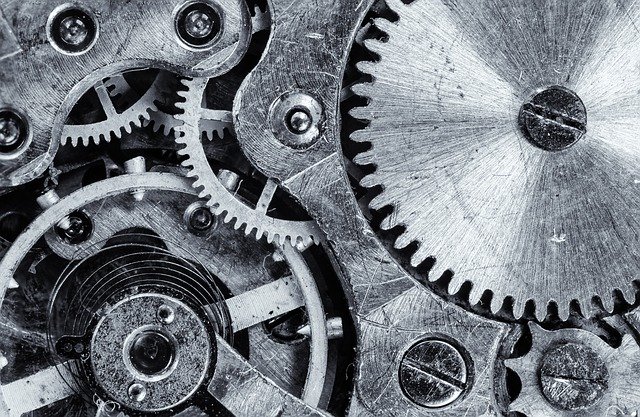FERROUS METALS
Ferrous metals take their name from Latin. In ancient Latin, Ferum translated as iron, thus ferrous metals all contain iron. The unique qualities between the different ferrous metals result from changes in the atomic relationship.
Ferrous metals are very durable. They are used in large, high-burden bridges, skyscrapers, the railroad system and immense sections of durable pipeline.
One of the downsides is vulnerability to rust. The appearance of rust often means iron-rich metal. Ferrous metals are not resilient enough against oxidation. The rust can set in easy. This excludes wrought-iron, which is so full of pure iron.
NON-FERROUS METALS
Non-ferrous metals, or metals without significant iron content, are also strong. However, they are lighter than ferrous metals and cannot suspend similar loads. They are more malleable as well, and both traits can be an advantage.
They were the first metals to be used in the art of metallurgy. Silver, copper and gold have been collected and used since ancient times as currency, jewelry, crucibles, other holy objects, weapons and architectural components.
The lightweight quality of nonferrous metals like copper, tin, aluminum, brass and lead has its advantages. It is far more malleable, thus greater potential to restructure and make new metals is more possible. It still has good tensile strength even though its lighter.
Other advantages of his metal are its high conductivity of electrical current (i.e. copper), its resistance to corrosion (i.e. zinc) and its near immunity to magnetic force.
These metals are either transformed into finished products or intermediary metals. Deformation processes like rolling, extruding and forging transmute the intermediary metal to a finished product.
POPULAR FERROUS METALS
-Stainless Steal
IT will not rust, corrode or stain like ordinary steel. It is a poor conductor. It can be found in knives and cutlery, milled alloys, architecture, appliances and sterilized surgical tools.
-Wrought Iron
This metal is malleable, more so than most ferrous metals. Before a revolution in steel-making, wrought iron was a principle allow in the manufacture of steel. Today it is commonly found on farm perimeters, jail and prison fences, home decor and high-end carpentry tools.
-Cast Iron
Usually comes from Pig Iron. It is liquefied at high heat and molded into shape for solidification. Cast iron is found in buildings, bridges and life-lasting cookware.
-High Carbon Steel
This steel usually has a low threshold for temperature. It is fairly well at resisting rust. It is very rich in carbon, with concentrations over 1%. The folded steel variety can be found in top-notch knives and blades, industrial machines and even the most sophisticated Japanese swords.
-Tool Steel
It is Repellent against corrosion, wear and high temperature. Used for things like injection molding and machine parts.
POPULAR NON-FERROUS METALS
-Aluminum
Aluminum is malleable, ductile and a powerful heat and electricity conductor. Found in many household items. Piping, bike frames, baseballs bats and siding are examples.
-Copper
Used in various alloys. It is a great conductor. It is malleable and soft. It is used in electric motors, wiring, currency, architecture like the Statue of Liberty and sheathing for ships.
-Gold
This rare, precious and highly sought after metal is extremely resistant to corrosion, heat, pressure and elements. Because it withstands heat and chemical reactions, and because it is so malleable and soft it is commonly used in electrical connectivity.
-Silver
Like gold, this precious metal is a great conductor and very resistant to corrosion, elements, chemicals and temperature. It is used in natural energy, medicine, jewelry and fine china.
-Bronze
This alloy is made of copper and zinc. There are corrosion resistant forms but it is susceptible to seasonal cracking. It is used in brass instruments, ancient art, doorknobs and household fixtures, locks, valves and more.
METAL RE-USE: Ferrous and Non-Ferrous metal recycling
The metallurgy field gets great benefit from the recycled Non-Ferrous metals. The scrap metals are often integral to the formation of new metals.
Because there is a lot of scrap metal, recycling is important. So much quality material would go to waste at the expense of the environment without a recycling plan. Dross is often made from Non-Ferrous metals when recycling plants recast and re-smelt the material.
Ferrous metals are recycled more than just about anything on Earth. The motives may be centered around profit maximization but the results are undeniable, and a strong model for all other industries.
Close to an astonishing 100% of all automobiles and 98% of structured steel was produced with recycled Ferrous metal in 2008. There is no single industry with numbers even close.
The impact is very clear. As a whole, the industry uses 75% less energy every year. Though economical concerns may be the driving force the incredibly reduced impact on the environment is hard to ignore.

